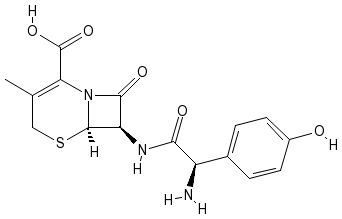In a review of group A beta-hemolytic streptococcal pharyngitis in this issue of American Family Physician, Hayes and Williamson(1) provide readers with some controversy. After discussing the uncontroversial epidemiology, diagnosis and therapy, the authors end with a prediction that penicillin might not be the drug of choice for the treatment of strep throat in the future.
Citing two important sources, the 2000 Red Book(2) and the practice guideline developed by the Infectious Diseases Society of America(3) (now available on the Internet at http://www. journals.uchicago.edu/CID/home.html), Hayes and Williamson(1) stress the diagnosis of streptococcal pharyngitis. Because the rate of streptococcal carriage can be high, the way to avoid detection of carriers and unnecessary use of antibiotics is to perform cultures with discrimination. The authors support the use of prediction rules. Logically, cultures should not be obtained in patients who are unlikely to have group A beta-hemolytic streptococcal pharyngitis, such as those with upper respiratory tract infection, nor should cultures be repeated. By reducing the likelihood of treating carriers, this approach goes a long way toward eliminating some of the controversy related to the diagnosis and treatment of strep throat.
Hayes and Williamson(1) do not address the difference between treating pharyngitis in the general population and treating it in patients with a personal or family history of rheumatic fever. Like immunocompromised patients with fever, patients with rheumatic fever must be aggressively treated. On initial presentation with rheumatic fever, patients are given penicillin G benzathine without waiting for the results of the initial culture. With subsequent episodes of pharyngitis in these patients, post-treatment cultures should be performed to ensure that group A beta-hemolytic streptococci have been eradicated. This treatment approach is also appropriate during outbreaks of rheumatic fever in closed populations, but it is not appropriate for the general population.(3)
Many infectious disease experts strongly disagree with the notion that there is an ever-increasing rate of penicillin failure in the treatment of group A beta-hemolytic streptococcal pharyngitis.(4) Although cephalosporins may result in a higher eradication rate for group A beta-hemolytic streptococci, the decision to replace treatment with penicillin or amoxicillin with the more expensive cephalosporins would be based on a resurgence of rheumatic fever from lower rates of streptococcal elimination, which has not been shown to be a problem to date. It is the majority opinion that most penicillin failures occur in carriers in whom the carrier state is not eradicated.
Erythromycin is the drug of choice in penicillin-allergic patients. Cephalosporins may be indicated in some situations, such as when erythromycin cannot be tolerated. Under these circumstances, it might be appropriate to use a beta-lactamase-stable medication such as amoxicillin-clavulanate potassium (Augmentin) or an orally administered cephalosporin. However, only first-generation cephalosporins such as cephalexin (Keflex, Keftab) or cefadroxil (Duricef), taken twice daily, would be indicated. These agents have a narrower spectrum and are less expensive than second- or third-generation cephalosporins. These broader spectrum cephalosporins should not be used.
Physicians likely have access to the broader spectrum agents because they are currently being heavily marketed. Physicians should avoid the temptation to dispense samples of these agents to patients with streptococcal pharyngitis.
In their review, Hayes and Williamson(1) do not discuss the use of clindamycin (Cleocin). Because of its activity against resistant pneumococci as well as group A beta-hemolytic streptococci, clindamycin now has a role in the treatment of ear, nose and throat infections.
Unlike Streptococcus pneumoniae, group A beta-hemolytic streptococci have not developed resistance to penicillins. Penicillin will probably continue to be effective treatment for streptococcal pharyngitis and part of the effort against rheumatic fever.
REFERENCES
(1.) Hayes CS, Williams H Jr. Management of group A beta-hemolytic streptococcal pharyngitis. Am Fam Physician 2001;63:1557-64.
(2.) Pickering LK, ed. 2000 Red book: report of the Committee on Infectious Diseases. 25th ed. Elk Grove Village, Ill.: American Academy of Pediatrics, 2000.
(3.) Bisno AL, Gerber MA, Gwaltney JM, Kaplan EL, Schwartz RH. Diagnosis and management of group A streptococcal pharyngitis: a practice guideline. Infectious Diseases Society of America. Clin Infect Dis 1997;25:574-83.
(4.) Pichichero ME. Eradication of group A streptococci [Letter]. Pediatrics 2000;106(2 pt 1):380-2.
COPYRIGHT 2001 American Academy of Family Physicians
COPYRIGHT 2001 Gale Group



